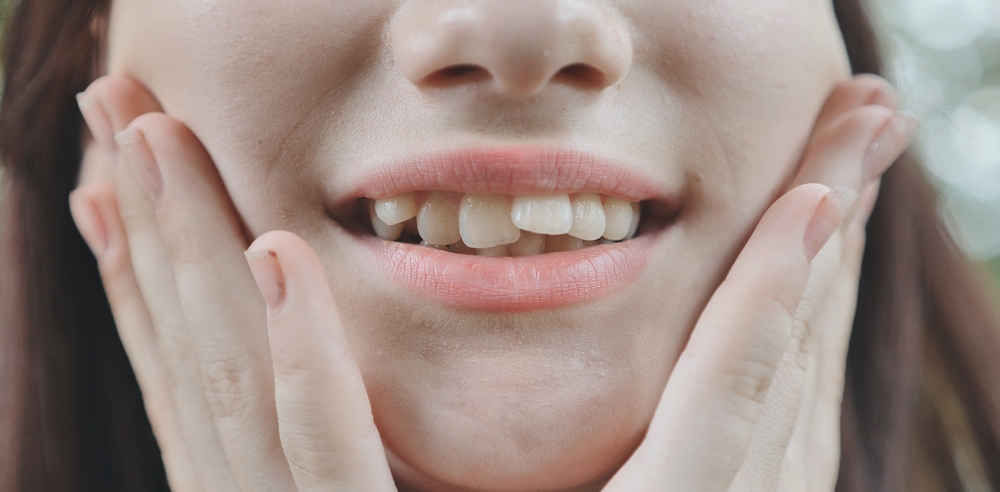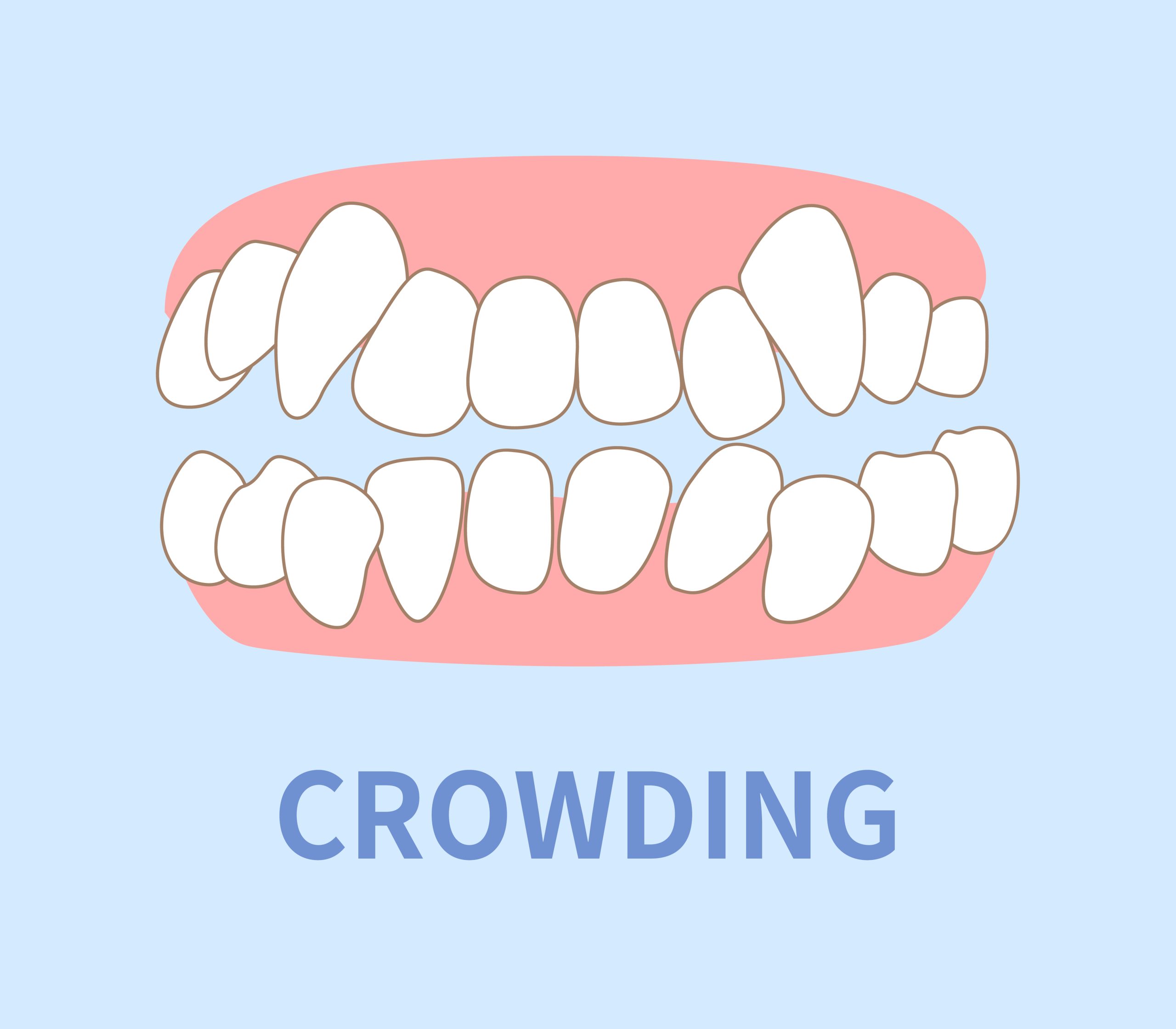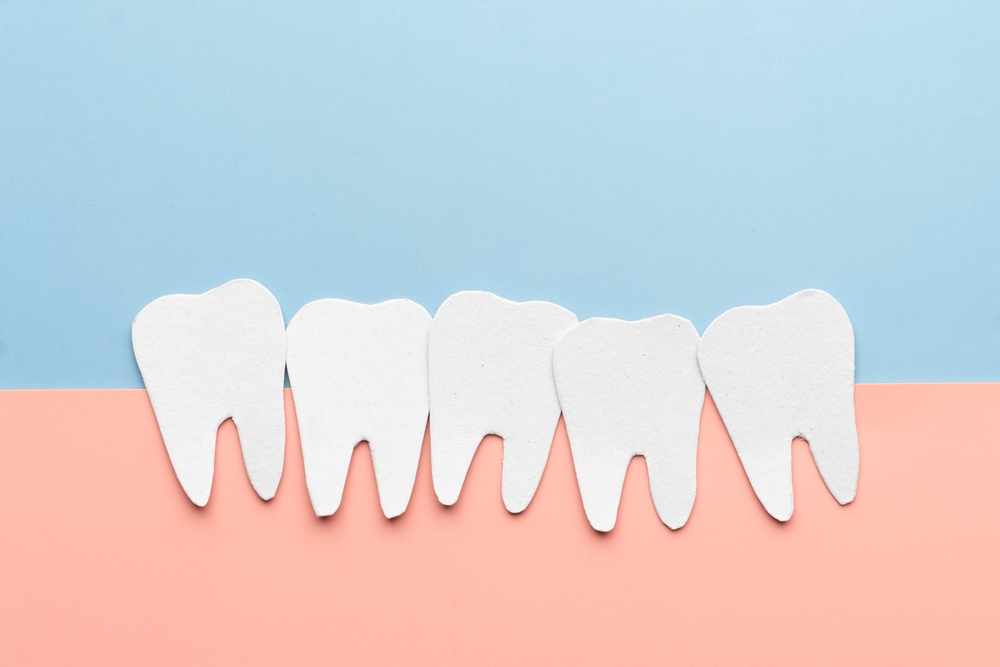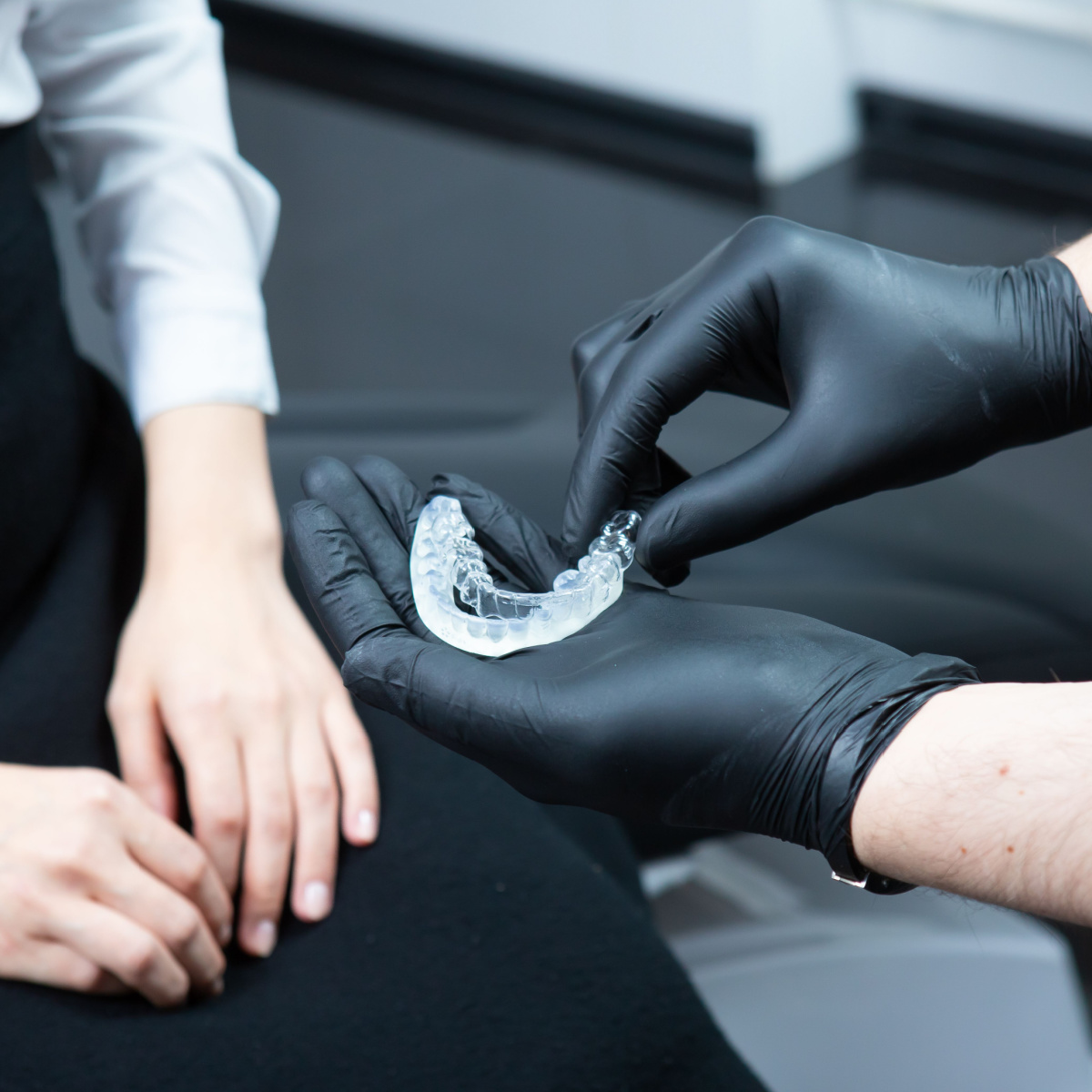1812 E. Broadway St.
Pearland, TX 77581
Tooth crowding is a complex dental condition that impacts numerous individuals, presenting challenges that extend far beyond mere cosmetic concerns. This dental misalignment occurs when the jaw lacks sufficient space to accommodate the upper and lower teeth, resulting in crooked, overlapping, or twisted dental positioning.
The consequences of tooth crowding can be significant, creating obstacles in proper oral hygiene and potentially leading to more serious dental complications. Dental misalignment can make thorough brushing and flossing challenging, which can create an environment where plaque and harmful bacteria proliferate, increasing risks of tooth decay, periodontal disease, and other oral health issues. Fortunately, innovative orthodontic solutions like Invisalign® offer patients at Pearland Dental Group a proven method to fix crowded teeth and achieve a beautifully aligned smile.
To schedule an Invisalign consultation with Dr. Rushi Dave or Dr. Mili Shah, contact our top-rated dental practice in Pearland today by calling (281)993-9900. We proudly help patients throughout Pearland, and surrounding areas such as Houston, Alvin, Fresno, and League City fix crowded teeth with advanced aligner therapy.
Tooth crowding develops when dental anatomy creates insufficient space within the jaw for proper tooth alignment. This condition can result in teeth becoming twisted, misaligned, or compressed, which subsequently impacts essential functions like chewing and speaking. In more extreme scenarios, significantly crowded teeth can even alter facial structure and cause persistent jaw discomfort.
Multiple factors can contribute to crowded teeth, including:
Neglecting tooth crowding can lead to numerous potential complications that extend beyond aesthetic concerns. Here’s a detailed look at the consequences of untreated dental crowding:
Crowded teeth create intricate cleaning challenges, making it difficult to brush and floss effectively. This can lead to:
Teeth that are out of alignment experience uneven wear patterns, which can result in:
Dental misalignment can significantly affect an individual’s self-perception and social confidence:
Severe crowding may disrupt proper bite alignment, leading to:
Dental misalignment might contribute to speech impediments, such as:
Protruding or irregularly positioned teeth face greater risks of accidental damage:
Persistent misalignment could trigger temporomandibular joint (TMJ) disorders, resulting in:
Addressing tooth crowding offers numerous advantages that extend beyond cosmetic improvements. Some of the many benefits of correcting dental crowding include:
Treating tooth crowding significantly improves overall oral health. When teeth are properly aligned, they become easier to clean effectively, reducing the risk of plaque buildup, cavities, and gum disease. Straightening crowded teeth makes brushing and flossing more efficient, which can lead to better long-term oral hygiene and a decreased likelihood of developing periodontal problems.
Correcting tooth crowding can dramatically enhance the appearance of your smile. Properly aligned teeth contribute to a more, attractive smile and balanced facial structure, which can boost self-confidence and improve social interactions. Many patients report feeling more comfortable smiling and laughing freely after their crowding issues have been resolved.
Easing tooth crowding improves overall dental function. Properly aligned teeth contribute to a more balanced bite, which can enhance chewing efficiency and reduce the risk of jaw pain and headaches. Correcting misalignments can also alleviate speech difficulties that may have been caused by crowded teeth.
Crowded teeth are more susceptible to damage from everyday activities. By addressing crowding, the risk of chipping, cracking, or breaking teeth due to misalignment is significantly reduced. This can help prevent costly dental repairs in the future and maintain the structural integrity of your teeth.
Misaligned teeth often experience uneven wear patterns. Correcting tooth crowding helps distribute bite forces more evenly across all teeth, preventing premature wear and erosion of tooth enamel. This can extend the lifespan of your natural teeth and reduce the need for restorative dental work in the future.
Treatment for tooth crowding addresses not only the visible misalignment but also underlying issues with jaw structure and bite alignment. This comprehensive approach can help prevent or alleviate temporomandibular joint (TMJ) disorders, reducing the risk of chronic jaw pain and related symptoms.
Invisalign represents a cutting-edge treatment designed to address overcrowded teeth through innovative technology. Utilizing clear, removable aligners, this treatment methodology gently repositions teeth over time, offering a sophisticated alternative to traditional metal braces.
The Invisalign process involves creating a series of custom-fabricated aligners uniquely tailored to each patient’s dental structure. Constructed from transparent, flexible medical-grade plastic, these aligners provide exceptional comfort and remarkable discretion. Patients typically wear each aligner set for approximately two weeks before transitioning to the next sequence in their personalized treatment plan.
Treatment duration varies significantly based on individual dental complexity, ranging from several months to multiple years. Consistent wear and adherence to the prescribed treatment protocol are crucial for achieving optimal results. Patients are typically required to wear their aligners for 20 to 22 hours each day, removing them only for eating, drinking, brushing, and flossing.
Invisalign treatment has demonstrated remarkable efficacy in addressing mild to moderate cases of crowding. The clear aligners apply gentle force on the teeth, gradually shifting them into proper alignment. As the teeth move, they create more space in the mouth, decreasing overcrowding and eventually moving into their correct positions.
When it comes to addressing tooth crowding, both Invisalign aligners and traditional braces offer effective solutions, but they differ significantly in terms of aesthetics, comfort, convenience, and overall effectiveness. Below is a detailed comparison of these two orthodontic treatments.
Invisalign treatment effectiveness is high when it comes to treating mild to moderate cases of tooth crowding. Align technology can also address various malocclusions, such as overbites and gaps between teeth. However, for more severe crowding or complex orthodontic issues, Invisalign aligners may be less effective.
On the other hand, braces are effective for all levels of crowding, including severe cases. They provide greater precision and control over tooth movement, making them suitable for complex misalignments that may not respond as well to clear aligners.
One of the standout features of Invisalign is its clear aligners, which are virtually invisible when worn. This makes them a popular choice among adults and teens who prefer a discreet orthodontic option.
In contrast, braces consist of metal brackets and wires that are visible. While ceramic braces offer a less noticeable alternative, they are still more visible than Invisalign aligners.
Invisalign aligners are made from smooth plastic, which generally makes them more comfortable to wear compared to traditional braces. There are no wires or brackets that can irritate the gums or cheeks.
Braces, however, can cause initial discomfort due to the metal components. Patients may experience soreness after adjustments as the wires are tightened, which can lead to irritation in the mouth.
One of the major advantages of Invisalign treatment is that every clear aligner tray is removable. This allows patients to eat, drink, brush, and floss without any restrictions. Additionally, Invisalign typically requires fewer office visits compared to braces, with treatment durations averaging between 12 to 18 months.
In contrast, braces are fixed appliances that work continuously throughout the treatment period. They require more frequent office visits for adjustments and typically have longer treatment times, averaging 18 to 24 months.
Maintaining oral hygiene is generally easier with Invisalign, as patients can remove the aligners for thorough brushing and flossing. This helps prevent plaque buildup and cavities during treatment.
With braces, oral hygiene can be more challenging because patients need to clean around brackets and wires. Special tools may be necessary to ensure proper cleaning and prevent dental issues.
With Invisalign, there are no food restrictions since patients can remove the aligners during meals. This flexibility allows for a normal diet without worrying about damaging appliances.
Conversely, patients with braces must adhere to certain dietary restrictions. They should avoid hard, sticky, or chewy foods that could damage the brackets or wires.
Invisalign utilizes advanced 3D imaging technology for treatment planning and employs SmartTrack material for predictable tooth movement. This allows for a high degree of customization in treatment options.
However, braces provide greater precision in complex cases due to their fixed nature. Orthodontists can make fine adjustments throughout treatment to ensure optimal results.
In general, Invisalign tends to be more expensive than traditional braces. The overall cost varies based on case complexity, insurance coverage, and treatment duration.
On the other hand, braces are typically less expensive than Invisalign. Like Invisalign, the cost of braces also varies depending on the complexity of the case, insurance, and how long treatment will take.
Compliance is crucial with Invisalign, as patients must wear their aligners for 20-22 hours per day for effective results. Success heavily relies on patient adherence to this regimen.
In contrast, braces do not rely on patient compliance since they are fixed appliances that use traditional brackets. This ensures continuous treatment without requiring patients to remember to wear anything.
Identifying tooth crowding involves recognizing several key indicators. Visually, your teeth might appear crooked, overlap, or seem twisted when you smile or examine them closely. You may also experience practical challenges such as difficulty maintaining thorough oral hygiene, struggling to floss effectively, or noticing a pattern of frequent cavities despite consistent dental care.
If you’re experiencing any of these symptoms, a professional evaluation by our experienced dentists can provide definitive insights into your dental alignment.
Tooth crowding can indeed precipitate a cascade of potential dental complications. The misalignment creates challenging surfaces that impede proper cleaning, allowing bacteria to accumulate in hard-to-reach areas. This bacterial buildup can accelerate decay, increase periodontal disease risks, and potentially lead to more complex oral health issues if left unaddressed.
Professional intervention through treatments like Invisalign can help mitigate these risks and restore both functional and aesthetic dental harmony.
While minor tooth crowding might show improvement through alternative approaches, significant misalignment typically requires professional orthodontic intervention. In cases of minimal crowding, targeted dental techniques or growth modifications might offer some correction.
However, more pronounced crowding generally necessitates structured treatments like Invisalign to achieve comprehensive realignment. A thorough diagnostic assessment by our dental professionals can determine the most appropriate custom treatment plan and strategy for your specific dental configuration.
Tooth crowding is typically a progressive condition that can worsen without intervention. As teeth continue to shift and jaw structures evolve, existing misalignments can become more pronounced, creating increasingly complex dental challenges.
The persistent pressure from overcrowded teeth can cause additional shifting, potentially exacerbating original misalignment and creating more significant long-term dental complications. Early detection and proactive treatment are crucial in managing and preventing the progression of tooth crowding.
Are you ready to transform your smile and enhance your oral health? Invisalign offers a modern, discreet solution to tooth crowding that can boost your confidence and dental functionality. Dr. Dave and Dr. Shah at Pearland Dental Group are committed to helping you achieve the smile you’ve always desired.
Contact our Pearland dental office today at (281)993-9900 to schedule a consultation. We proudly serve patients in Pearland, and surrounding areas such as Houston, Alvin, Fresno, and League City, TX. Take the first step towards a straighter, healthier, and more confident smile!






Our clinic offers all kinds of services and constantly study new
technology to add new custom services to the list
Phone: (281)993-9900
Address: 1812 E. Broadway St. Pearland, TX 77581
Copyright © 2021 Pearland Dental Group | Managed by Now Media Group